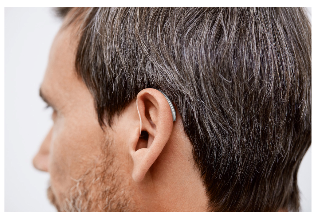CAUSES OF HEARING LOSS
Hearing loss is the inability to hear partially or totally in either one ear or both the ears. A person can be termed as having hearing loss or hearing impairment in case his hearing threshold is over 25dB. People with hearing loss feel cut off from the conversation and feel left out or alone. However you are not alone.

- One out of three people over age 65 has some form of hearing loss..
- 10% of the world population suffers from hearing impairment.
- More than 65 million people in India suffer from hearing disability.
- Hearing loss has been identified as the second most common YLD (years lived disability) in India.Depending on the level of hearing loss, it can be divided into four categories : Mild, Moderate, Severe and Profound hearing loss.
Hearing loss is classified as two types – sensorineural or conductive. For adults, about 95% of hearing loss is sensorineural in nature and is commonly referred to as “nerve damage”. This type of hearing loss is usually a result of the aging process, noise exposure, and several other factors. It is rarely treated by medical intervention and hearing aids are the most common method of treating the hearing problems associated with it. People with sensorineural hearing loss describe an inability to hear speech clearly and frequently misunderstand what people say. They describe speech as sounding muffled, and report understanding conversation when in crowds and background noise as very difficult. Loudness is usually not as much a problem, mostly clarity of words.

Conductive hearing loss is not as common in adults and almost always requires an evaluation and consult with a physician. Some examples of a conductive hearing loss are earwax impaction, fluid behind the eardrum, hardening of the middle ear bones (otosclerosis), swimmer’s ear, and other physical or medical signs/symptoms. Treatment options can range from medicinal to surgical and/or being fit with hearing aids.
It is possible to have a “mixed hearing loss” which is a combination of sensorineural and conductive.

Profound hearing loss is the most extreme hearing loss. A profound hearing loss means that you may not hear loud speech or any speech at all. You are forced to rely on visual cues instead of hearing as your main method of communication. This may include sign-language and/or speech reading (also commonly referred to as “lipreading”).
People with severe hearing loss have difficulty hearing in all situations. Speech may be heard only if the speaker is talking loudly or at close range. A severe hearing loss may sometimes cause you to miss up to 100% of the speech signal. Symptoms of severe hearing loss include inability to have conversations except under the most ideal circumstances (i.e., face-to-face, in quiet, and accompanied with speech reading).
A moderate hearing loss may cause you to miss 50-75% of the speech signal. This means you would not have problems hearing at short distances and understanding people face-to-face, but you would have problems if distance or visual cues changed. Symptoms of moderate hearing loss include problems hearing normal conversations and problems hearing consonants in words.
A mild hearing loss may cause you to miss 25-40% of the speech signal. Usually this results in problems with clarity since the brain is receiving some sounds but not all of the information. Symptoms of mild hearing loss include problems understanding someone farther away than a normal distance for conversation, or even up close if the background environment is noisy. Weak voices are also difficult to understand for people with mild hearing losses.
A unilateral hearing loss is hearing loss in one ear. Hearing in one ear is normal but the other ear is hearing-impaired. Symptoms of unilateral hearing loss may include difficulty locating the source of sounds, and problems hearing understanding speech in certain situations, such as:
- Problems hearing faint or distant speech, especially if weaker ear is closer to the person speaking
- Problems hearing in a background of noise — especially if the “good” ear is close to the competing signal.
